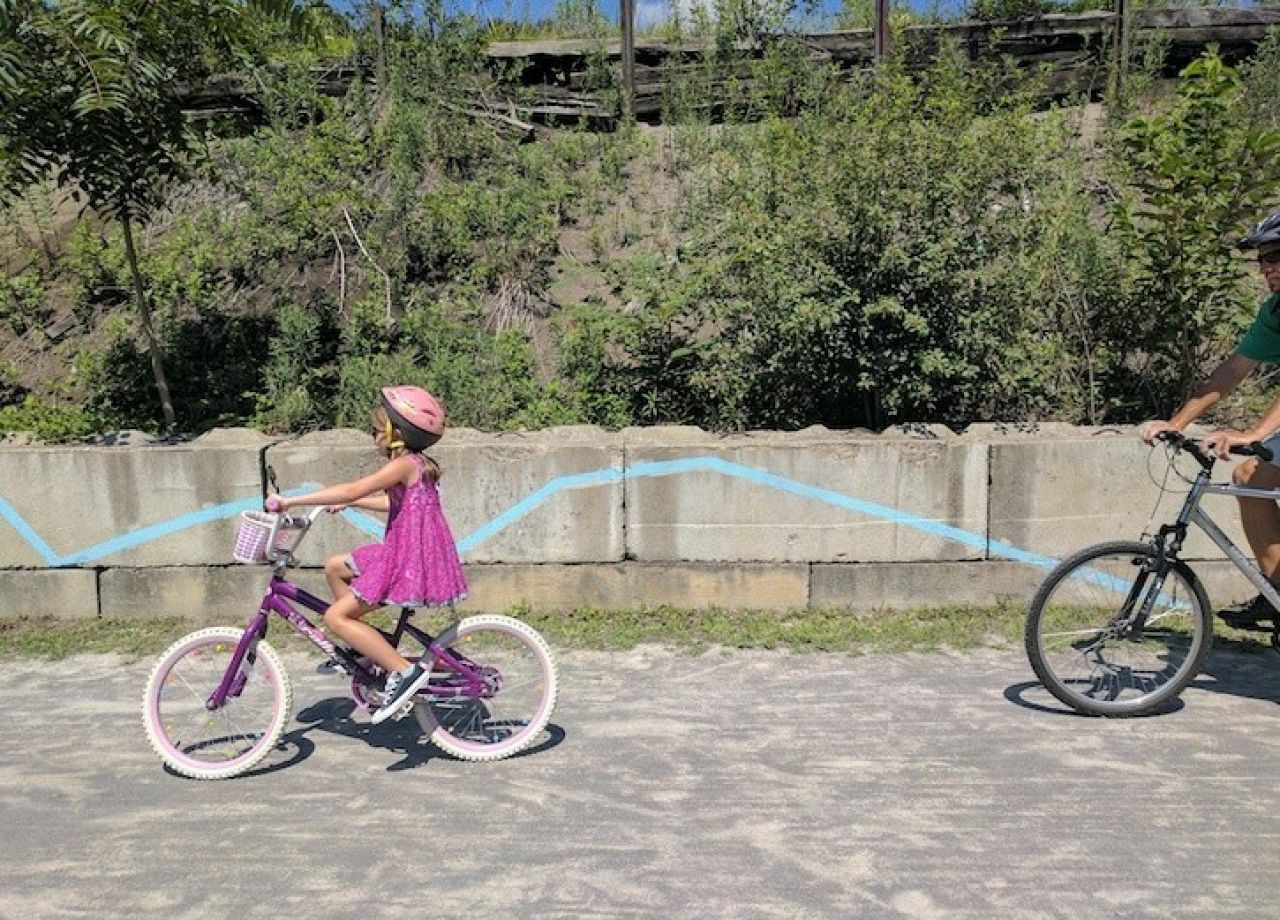October 01, 2019
Tarantino Leaves 'Watermark' on Pittsburgh Community

Follow the thin blue line. Those who do will discover the nooks and crannies of Millvale, a small community just outside Pittsburgh. The public art project, conceived by Ann Tarantino, aims to bring life and energy back to the town, which was devastated by a flood 15 years ago.
Tarantino, assistant professor of art, curator of the Borland Project Space, and director of the Woskob Family Gallery, was selected for the project after responding to a call for proposals from Pittsburgh's Neighborhood Allies and Pittsburgh's Office of Public Art in 2016. She was one of six artists chosen to work with Pittsburgh-area communities in need of a boost.
"Pittsburgh has a great tradition of support for innovative public art projects, and it's long been a goal of mine to work with their Office of Public Art to contribute to that landscape," said Tarantino. "I was especially interested in the creative placemaking mandate and the community engagement component."
 Tarantino worked with the Millvale Community Development Corporation, Millvale Community Library, and the Society to Preserve the Murals of Maxo Vanka over the course of several months to develop the project and come up with a community engagement strategy. The resulting artwork, titled "Watermark," aims to visually connect Millvale's Riverfront Park with the rest of town‚ which is cut off by a large, complex intersection‚ while referencing the community's relationship to water (the Allegheny River runs along the southeastern edge of the town) and making a local pocket park inviting at night.
Tarantino worked with the Millvale Community Development Corporation, Millvale Community Library, and the Society to Preserve the Murals of Maxo Vanka over the course of several months to develop the project and come up with a community engagement strategy. The resulting artwork, titled "Watermark," aims to visually connect Millvale's Riverfront Park with the rest of town‚ which is cut off by a large, complex intersection‚ while referencing the community's relationship to water (the Allegheny River runs along the southeastern edge of the town) and making a local pocket park inviting at night.
"Millvale has sort of reinvented itself since the flood 15 years ago," Tarantino explained. "Sustainability and understanding water issues has been a big part of that rebuilding effort."
The project consists of a painting‚ a thin blue line‚ that winds its way from Riverfront Park, across the huge intersection, and through the Grant Avenue business district, ending at Grant Avenue Pocket (GAP) Park. The line and the forms it takes as it moves take their inspiration from water‚ how it moves, travels, and supports life on all levels, Tarantino explained.
 When the line arrives in GAP Park, it is joined by a light and audio installation. Ten projectors fitted with custom gobos flicker, fade, and join together to create a sense of being immersed in water, and become visible each night at dusk. The audio‚ a collage of water from different contexts, such as rainfall, melting snow, and tropical rainforests‚ plays softly through the day and is almost imperceptible until viewers stop to look and listen.
When the line arrives in GAP Park, it is joined by a light and audio installation. Ten projectors fitted with custom gobos flicker, fade, and join together to create a sense of being immersed in water, and become visible each night at dusk. The audio‚ a collage of water from different contexts, such as rainfall, melting snow, and tropical rainforests‚ plays softly through the day and is almost imperceptible until viewers stop to look and listen.
"The light and audio provide a different experience with water and a way to reflect on it once viewers reach the park," Tarantino noted.
The project, which will be on display through 2018, is funded by the Heinz Endowments and the Hillman Foundation.
